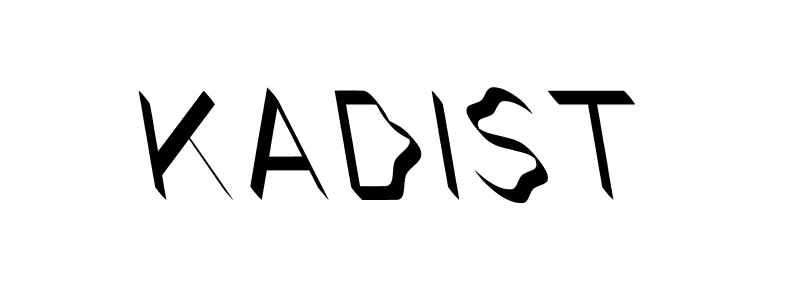Versions
2012 - Film & Video (Film & Video)
6:00 minutes
Oliver Laric
Oliver Laric’s video Versions is part of an ongoing body of work that has continued to evolve and mutate over time. Comprised of several video and sculptural works that share the same title, the Versions series reflects Laric’s key concerns: the mutability of images and objects and the negotiation between original and copy. In this video, we see several 3D renders of recognizable objects and places, while an ubiquitous feminized robotic voice that evokes the domestic familiarity of voice recognition tools such as Siri and Alexa, speaks of issues relating to identity, language, and translation. Formally, these concepts are reflected through strategies of doubling, mirroring, translating, transferring and mimicking: images of ancient Greek busts are reproduced in postal stamps for Mali and Peru; two popular Disney characters dancing side by side reveal how the same motion was used for both of them; and iconic basketball moments are immortalized both through photographs and interpretations in Manga comics. In addition to the formal strategies, there’s an array of historical references that bring the same concerns to the fore, including a piece by piece architectural render of the Ise Shrine, which is demolished and rebuilt every 20 years as part of Shinto belief system of death, renewal, and the impermanence of all things. Another key reference that appears in many of Laric’s videos and sculptural works is the bust of Chinese military strategist Sun Tzu, Laric’s interest centered around the proliferation of adaptations of his ancient military treatise Art of War, which have been disseminated globally.
Oliver Laric is a Berlin-based, Austrian multimedia artist whose work is centered around issues of authorship, originality, and ownership—with a specific interest in visual culture in the digital age. His work and broad research addresses an ongoing history of the mutability of objects and images. From ideas of copyright to examples of iconoclasm (the destruction of religious iconography), Laric’s focus is on how objects and images are continually re-represented, appropriated, remixed, augmented and modified. Several of Laric’s work evolve over time, at times relying on the voracious contribution of online communities. From 2006–2012, for example, Laric was part of the project VVORK, an art blog as exhibition space, which gained a large following and led to the group working as a curatorial collective. He has also collaborated with a range of museums to make 3D scans of sculptures available and free to download online. Even his own sculptural practice is often based on versions of classical and neoclassical sculptures, which he then reinterprets. His interest in reinscribing or opening up material, however, is not in the new or hybrid objects that result, but rather the moment of transfer, the metamorphosis of objects into other objects or images, and the endless potential of mutability. That is what Laric tries to capture.
Colors:
Related works featuring themes of: » Appropriation Art, » Art That Plays With Scale, » Austria, » Collecting and Modes of Display, » Austrian
» see more

© » KADIST
Rivane Neuenschwander
2007Mapa-Mundi BR (postal) is a set of wooden shelves holding postcards that depict locations in Brazil named for foreign countries and cities...

© » KADIST
Mariana Castillo Deball
2015Taking archaeology as her departure point to examine the trajectories of replicated and displaced objects, “Who will measure the space, who will tell me the time?” was produced in Oaxaca for her exhibition of the same title at the Contemporary Museum of Oaxaca (MACO) in 2015...
Other related works, blended automatically
» see more

© » KADIST
Rivane Neuenschwander
2007Mapa-Mundi BR (postal) is a set of wooden shelves holding postcards that depict locations in Brazil named for foreign countries and cities...

© » KADIST
Will Rogan
2010MUM , the acronym used to title a series of Rogan’s small interventions on found magazines, stands for “Magic Unity Might,” the name of a vintage trade magic publication...

© » KADIST
Allan McCollum
1982In the work titled The Glossies (1980), an affinity for photography manifested itself before McCollum actually began to use photography as a medium...
Related works sharing similar palette
» see more

© » ARTS EQUATOR
Weekly Picks: Indonesia (18 - 24 February 2019) | ArtsEquator Thinking and Talking about Arts and Culture in Southeast Asia Weekly To Do February 18, 2019 Top Picks of Indonesia art events in Bali, Bandung and Jakarta from 18-24 February 2019 To celebrate the TiTian Art Space’s 3rd Anniversary, the art space and organization presents EXPLORATION , a group exhibition that serves also as an initiative to encourage artists to break boundaries...

© » THEARTNEWSPER
Arnolfini censorship row deepens as artists refuse to work with the Bristol institution Art market Museums & heritage Exhibitions Books Podcasts Columns Technology Adventures with Van Gogh Search Search Censorship news Arnolfini censorship row deepens as artists refuse to work with the Bristol institution The dispute was sparked by a decision to cancel Palestine Film Festival events Gareth Harris 14 December 2023 Share Signatories say that the Arnolfini's cancellation is "part of an alarming pattern of censorship and repression within the arts sector" Courtesy Artists for Palestine UK More than 1,000 cultural figures—including the artists Ben Rivers, Brian Eno and Tai Shani—are refusing to work with the Arnolfini contemporary arts centre in Bristol, UK, after the institution cancelled two events last month as part of the city’s Palestine Film Festival...
Related works from the » 2010's created around » Berlin, Germany
» see more

© » KADIST
Haegue Yang
2010In addition to Yang’s signature drying rack and light bulbs, Office Voodoo includes various office supplies like CDs, paper clips, headphones, a computer mouse, a stamp, a hole puncher, a mobile phone charger...

© » KADIST
Simon Fujiwara
2016Masks is a series of abstract paintings by Simon Fujiwara that together form a giant, fragmented portrait of German Chancellor Angela Merkel’s face...

© » KADIST
Mariana Castillo Deball
2015Taking archaeology as her departure point to examine the trajectories of replicated and displaced objects, “Who will measure the space, who will tell me the time?” was produced in Oaxaca for her exhibition of the same title at the Contemporary Museum of Oaxaca (MACO) in 2015...
Related artist(s) to: Oliver Laric » Aleksandra Domanović, » Laure Prouvost, » Boris Groys, » Camille Henrot, » Christian Jankowski, » Ed Atkins, » Fiete Stolte, » Frieze Film, » Hito Steyerl, » Jon Rafman
» see more

© » KADIST
Jon Rafman
2018View of Harbor by Jon Rafman mines the latent cultural imaginary surrounding climate change and society’s collective death drive...

© » KADIST
Christian Jankowski
2008In New York City’s Chinatown, subject Suat Ling Chua’s morning exercise is to practice the hula hoop...

© » KADIST
Laure Prouvost
2018Monteverdi Ici – Deeply, Feeling Filling the World by Laure Prouvost is a tapestry that references a video by the artist entitled Monteverdi Ici (2018)...

© » KADIST
Laure Prouvost
2018Monteverdi Ici by Laure Prouvost is a non-narrative video work that depicts the back of the artist’s naked body standing, with her back towards the camera in a field...
Related works found in the same semantic group
» see more

© » KADIST
Kwan Sheung Chi
2012Kwan Sheung Chi’s work One Million is a video work depicting the counting of bills...

© » KADIST
Independent curator Christina Linden presented Igor Grubic’s East Side Story (2006-2008), a two-channel video work that includes documentary footage from the first Gay Pride parade in Belgrade (2001) and Zagreb (2002), paired with a video of dancers in same public spaces as the parades to perform a choreography that recalls both the stand taken by demonstrators and the violent backlash from onlookers...







